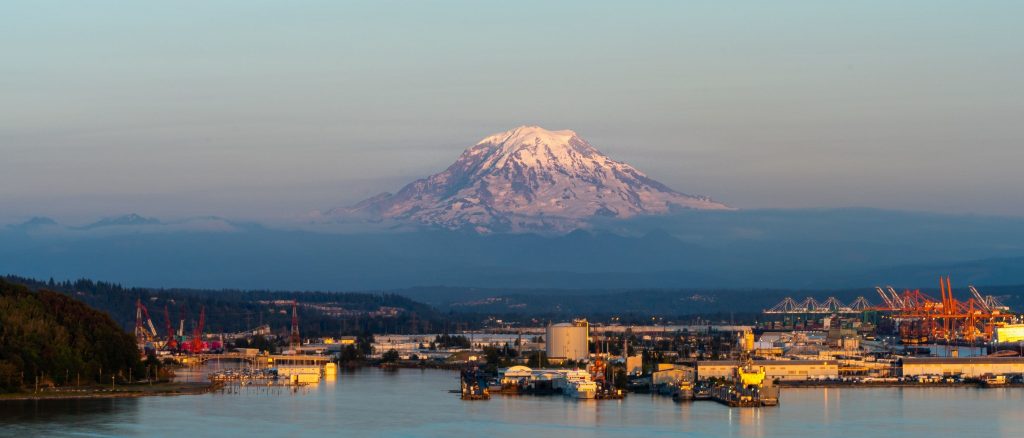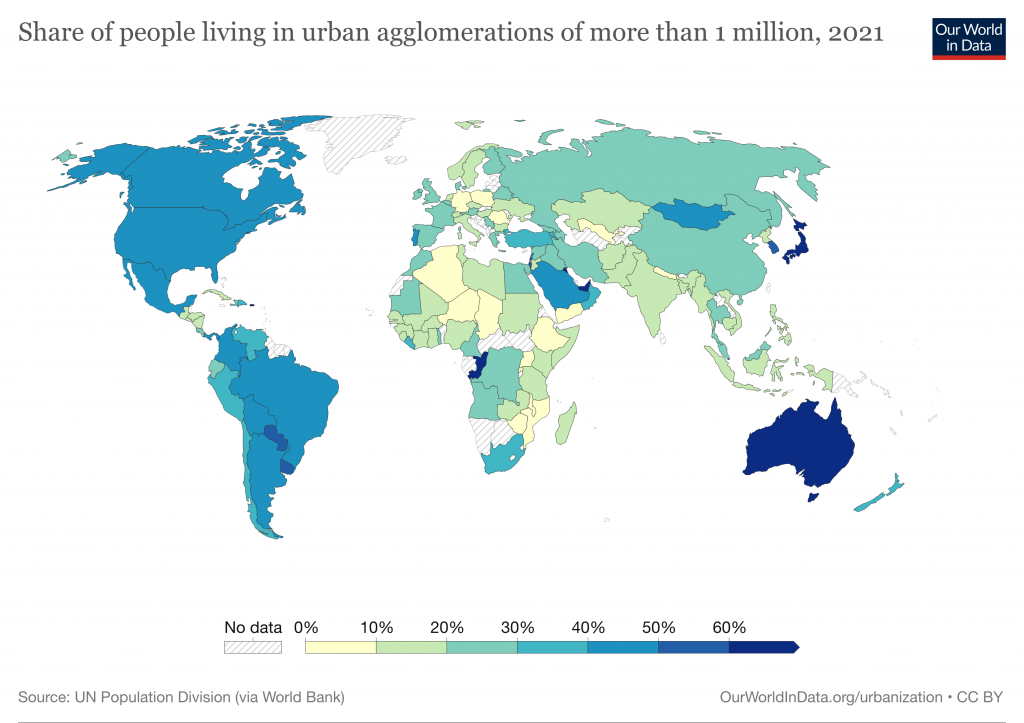Have you ever wondered why urban cities exist and why they’re located where they are? Historically, these spaces exist due to a confluence of human factors rooted in geography, politics, and human society. But their existence has fundamentally been driven by their ability to offer social and cultural advantages to their inhabitants, bringing people closer together to accelerate human achievement. Here, we explore a few factors:
Economic Agglomeration
Today, roughly 56% of the world’s population (4.4 billion inhabitants) – live in cities. They provide a platform for economic activities to thrive; as populations concentrate in urban areas, businesses benefit from proximity to suppliers, customers, and skilled labor. This agglomeration leads to increased productivity, innovation, and economic growth in certain sectors like manufacturing and technology. Data from the United Nations and the World Bank highlight the positive correlation between urbanization rates and per capita GDP in various countries.
Resource Availability
One of the fundamental reasons behind the location of cities is their proximity to essential natural resources. Chicago, for example, is nestled in the Midwest, surrounded by farmland. Similarly, Seattle thrives among navigable waterways, providing access to interregional and international trade routes. According to the OEC, in May of 2023, the top exports of Seattle WA, were Corn ($108 M), Concentrated Milk ($23 M), Frozen Vegetables ($22.5 M) and Non-fillet Frozen Fish ($16.6 M). These strategic locations allowed cities to develop and flourish by harnessing the resources available in their vicinity.
Social and Cultural Ammenity
Thriving cultural scenes have been able to bring cities to life, offering positive effects on public health and community stability. Cities that offer a diverse array of social and cultural amenities, including educational institutions, healthcare facilities, and cultural events – have encouraged private investment as well. These areas have been known to attract people seeking improved living standards and safe neighborhoods. That said, the provision of fiscal investments are crucial to support new urban centers’ with new social and cultural richness.

The Foss Waterway cleanup in Tacoma, has been a remarkable story that highlights that vision. Strategic re-development of a once-polluted industrial area into a thriving urban waterfront district, showcasing the potential for sustainable, and economically beneficial urban development. Today, we see old industrial buildings repurposed into offices, apartments, and retail spaces. The effects of community engagement have been able to transform our urban spaces into happier, more cohesive places to live.
In summary, cities exist as hubs of economic, social, and cultural activity, driven by factors such as economic agglomeration, resource accessibility, and the allure of diverse social and cultural opportunities. The pivotal role cities play in shaping human civilization and progress are dependent on how we can improve the areas around us. As we continue to design urban spaces, our aim to develop sustainable communities should factor in social cohesion among the fiscal and economic debates of redevelopment.

